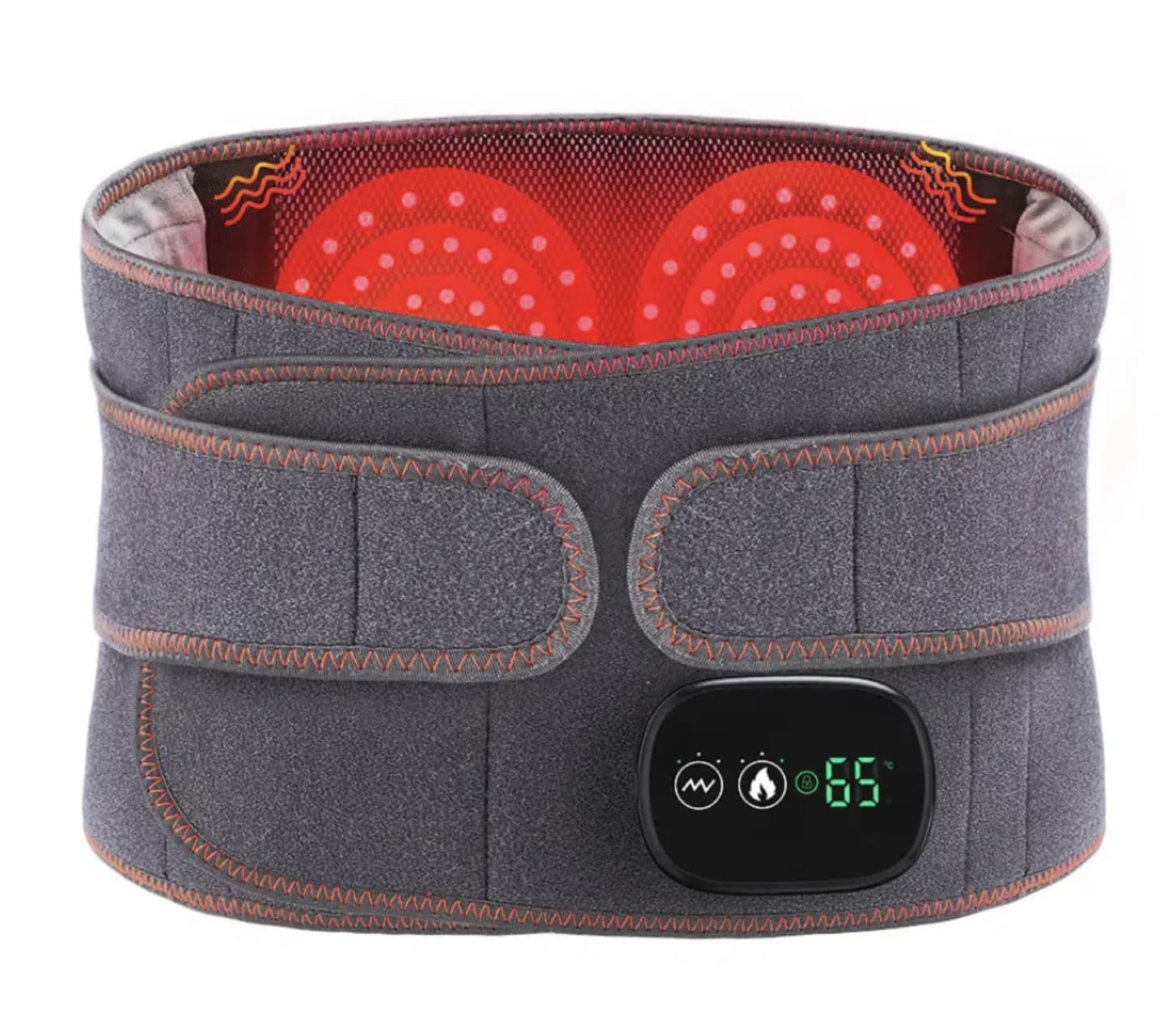As a health expert specializing in musculoskeletal wellness, I am constantly seeking innovative solutions to address back pain—an issue that affects millions globally. Recently, I had the opportunity to extensively test the Hatch Belt, a therapeutic wearable device combining thermotherapy, massage therapy, and red light (near-infrared) therapy. After weeks of personal use and clinical observation, I can confidently share my detailed review of its effectiveness, usability, and overall value.
Table of Contents
Initial Impressions
Upon first encountering the Hatch Belt, I was intrigued by its promise to deliver rapid relief across a range of back ailments. The device was presented in sleek, minimalist packaging with comprehensive instructions. The build quality immediately stood out—it’s lightweight yet sturdy, constructed from breathable materials that allow for comfortable, prolonged wear. Charging the belt was straightforward, and the battery held up for multiple sessions, affirming its portability for home or travel use.

Design and Setup
Attaching the Hatch Belt is simple; the adjustable strap easily fits most waist sizes, and extension options cater to individuals who need a larger fit. The control panel—either digital or touchscreen depending on the model—was intuitive, allowing me to personalize heat, massage intensity, and red light therapy duration. This flexibility is especially important for customizing therapy modalities to each patient’s unique pain profile.
Using the Hatch Belt: First Sessions
During my trial period, I experienced both acute muscle stiffness after strenuous workouts and chronic lower back discomfort from long hours at my desk. I was eager to see how the device’s three core therapies would perform:
1. Thermotherapy (Heat)
The heating plates deliver rapid warmth, penetrating deep into tissue layers. Within minutes, my muscle tension began to dissipate. Heat therapy is a cornerstone of pain management, improving blood circulation, loosening tight muscles, and priming tissues for further manipulation. The Hatch Belt offers adjustable temperatures, which helped me find the optimal setting for comfort—never overly hot, but just right to promote relaxation.
2. Massage Therapy
Dual motors built into the device simulate a gentle but firm massage along the lumbar region. There are different modes and intensities; I found the rhythmic pulsation to be particularly effective for breaking up knots and reducing spasms. Unlike large external massagers, the Hatch Belt targets the crucial areas of the lower back while allowing free movement. Over repeated sessions, I noticed a steady reduction in soreness and a return of flexibility.
3. Red Light (Near-Infrared) Therapy
Red light therapy, originally developed for NASA, has gained attention for its ability to stimulate cellular repair and reduce inflammation. The near-infrared lights in the Hatch Belt reach deeper tissue layers that topical treatments cannot, accelerating recovery and reducing pain at the source. Although this modality takes time—several sessions for optimal effect—I detected a subtle but notable improvement in baseline discomfort and post-exercise recovery.
Daily Use and Long-Term Results
I committed to wearing the Hatch Belt for at least 30 minutes daily over a three-week period. The device’s lightweight, wireless design never felt intrusive—I used it while reading, working, or even during gentle stretching routines.
By the end of the second week, my lower back felt less stiff, and the frequency of pain episodes had declined sharply. Tasks that previously triggered discomfort, such as bending or lifting, became manageable. My overall flexibility improved, and I recovered faster from physical exertion. I was also able to adjust settings on-the-fly—warmer after exercise, gentler massage at midday, concentrated red light in the evenings.
As a health expert, one of my priorities is discerning placebo effect from genuine, sustained benefit. In this case, the multi-modal approach (heat, massage, and light) mirrors clinical best practices for injury rehab and pain management. The Hatch Belt merges these therapies into a single, practical device.
Who Can Benefit?
Based on my experience, I recommend the Hatch Belt to:
- Those with chronic lower back pain, including disc issues, pinched nerves, and muscle tension.
- Fitness enthusiasts recovering from strains or soreness.
- Office workers dealing with prolonged sitting and postural stress.
- Individuals seeking alternatives to medication or invasive procedures.
The combination of heat and massage is excellent for muscle conditions, while red light therapy addresses inflammation and cellular healing. I also tested the device’s extension feature with several patients of varying body types, all of whom found it comfortable and effective.
Drawbacks and Considerations
No device is perfect, and it’s important to acknowledge some limitations:
- Insurance Coverage: The Hatch Belt is marketed as an alternative therapy device and, as of my review, is not typically covered by standard insurance plans.
- Consistency Required: While rapid relief is possible, the best results come from regular, sustained use.
- Cost: The price point may be higher than basic heat wraps or massagers. However, considering the added benefits of red light therapy and portability, I believe it’s justified for the results delivered.
Is the Hatch Belt Worth Buying?
After thorough personal and clinical use, I can confidently say that the Hatch Belt delivers on its promises. Its combination of heat, massage, and red light therapy provides a level of relief and recovery not matched by conventional back braces or single-modality devices. The user-friendly design, wireless convenience, and adjustable settings make it suitable for a wide range of people with back pain or stiffness.
If you’re seeking a non-invasive, drug-free method to improve back health, increase mobility, and manage pain, I strongly recommend investing in the Hatch Belt. It’s well-engineered, effective, and backed by positive clinical feedback and user reviews. For those struggling with recurring back issues, this device is absolutely worth buying.

Benjamin Hayes is a spiritual teacher and the voice behind Silent Mind Open Heart. Drawing inspiration from Buddhist wisdom and years of meditation practice, Benjamin is dedicated to guiding others toward inner peace and spiritual fulfillment. Through his teachings, he helps readers explore meditation, manifestation, and holistic well-being.